What Game Can You Hunt in North Carolina? 25 Common Game
Last Updated on

North Carolina’s foothills, coastal plains, mountains, and coastline are populated with abundant wildlife, but rural areas are not the only places where you’ll spot the state’s wild creatures. Suburban neighborhoods and cities are visited by deer, bears, and several small animals. However, hunting is only allowed on public hunting grounds and private land. If you see a bear running across the street in downtown Raleigh, resist the urge to grab your rifle.
Although most residents and hunters are familiar with the white-tailed deer, you may not know that you can hunt over 25 species of game animals in the Old North State. We compiled a list of the most common game animals and included the season dates and daily bag limits. The hunting season dates are for the 2022–2023 season, and restrictions may apply depending on the county. The animals are grouped under the big game, waterfowl, and small game categories.

The 25 Common Game You Can Hunt in North Carolina
Big Game
1. Black Bear
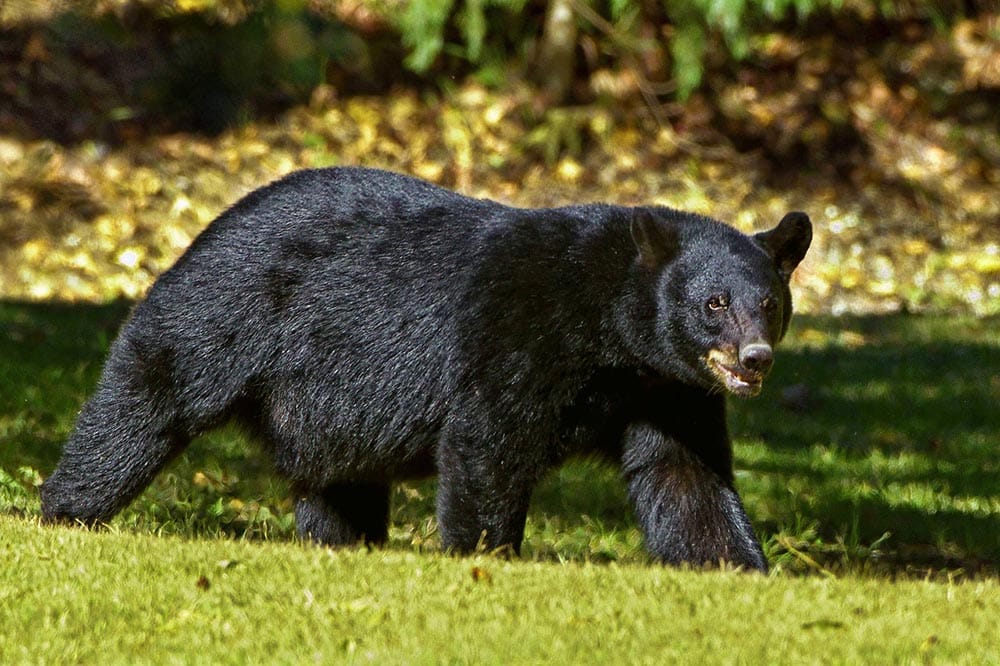
| Season Dates: | October–January, depending on the zone |
| Daily Bag Limit: | Only 1 per season |
Since early colonists nearly hunted the species to extinction, the black bear’s numbers were low in the southeastern United States by 1900. However, due to conservation efforts, the species rebounded, and by 2021, the population numbered over 20,000. The coastal plains and mountains have the largest populations, but the black bear has expanded its range into the piedmont. North Carolina has over 500,000 acres set aside as bear sanctuaries.
2. Wild Turkey
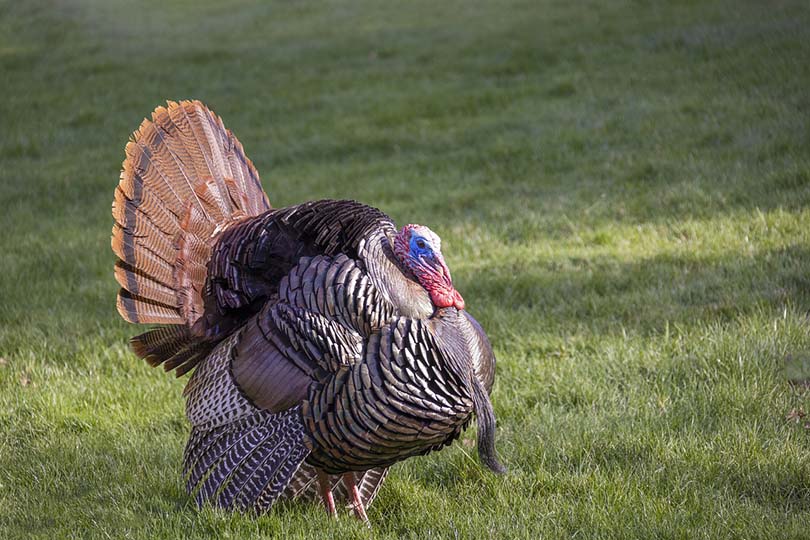
| Season Dates: | April 9–May 7 |
| Daily Bag Limit: | 1 |
Wild turkeys prefer forested areas and open land in North Carolina, but like the black bear, the wild turkey barely escaped extinction. Due to unregulated hunting, the birds’ numbers continued to drop until the 1960s. However, the North Carolina Resources Commission implemented a restoration program that saved the species, and hunters are allowed to kill one turkey per day in early spring. Compared to other seasons for game species, the wild turkey has one of the shortest seasons in the state.
3. White-Tailed Deer
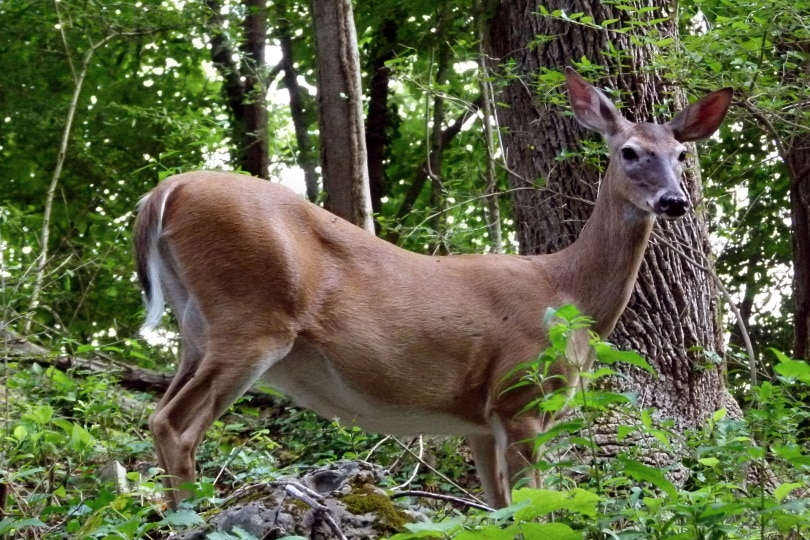
| Season Dates: | September–January, depending on the region |
| Daily Bag Limit: | No daily limit, but limited to 6 per season |
No other game animal is hunted as frequently as the white-tailed deer in North Carolina. Deer are common throughout the state and can adapt to practically any environment. Unfortunately, they often forage on agricultural crops, and they’re well-known for shredding the leaves, stems, and fruit from plants in suburban gardens. The white-tailed population is approximately 1 million deer, and that’s an impressive number considering that there were only around 10,000 in 1900. Hunting deer in the state is a big business; hunters spend about $311 million every year on deer hunting-related expenses.
Waterfowl
4. Ducks
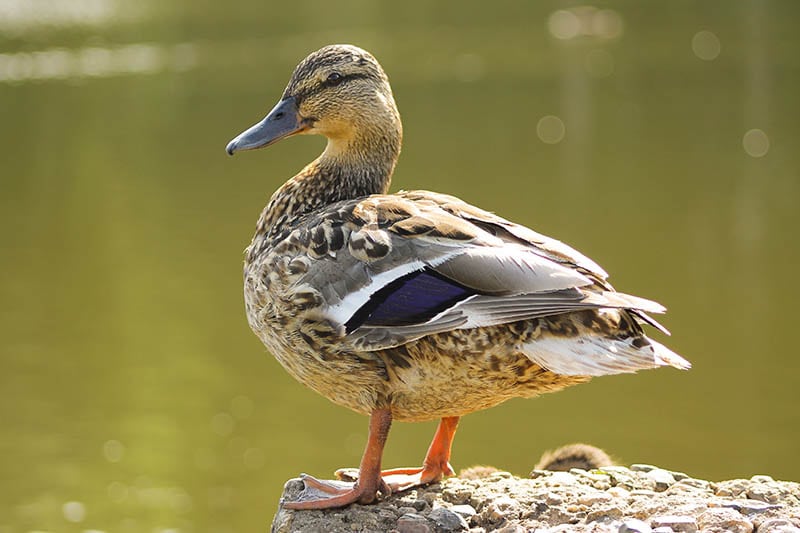
| Season Dates: | October, November, December, and January, depending on the region |
| Daily Bag Limit: | 6 |
Duck season in North Carolina is categorized into the Inland Duck Zone and Coastal Duck Zone. Although you can hunt several species of duck in the state, the bag limit has various restrictions. For instance, you can typically take home six ducks a day, but you cannot kill more than three scoters, three eiders, two mallards, or three wood ducks. Black ducks and mottled ducks cannot be hunted during the standard season in the inland and coastal zones, and the season for the two species is closed until November 19.
5. Sea Ducks
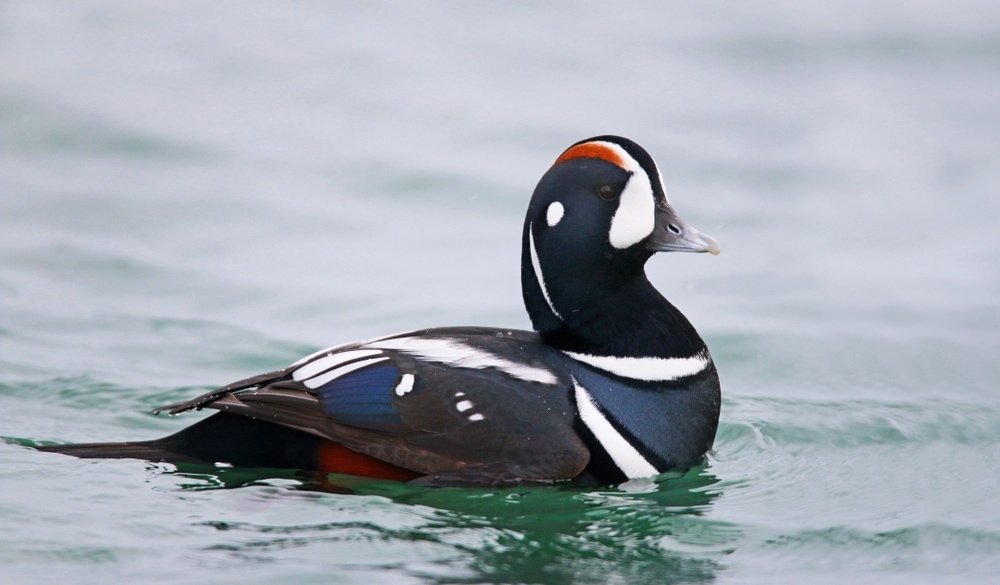
| Season Dates: | October 28–29, November 5–26, December 17–January 31 |
| Daily Bag Limit: | 4 |
Mergansers, harlequins, and long-tailed ducks are considered sea ducks. When mergansers migrate south, some spend the winter in the Pamlico Sound. The waterway stretches from the mouth of the Neuse River to historic Manteo, and it’s a duck hunter’s paradise when several migrating species visit. You can also find the diving ducks in lakes, rivers, and inlets.
6. Canada Geese
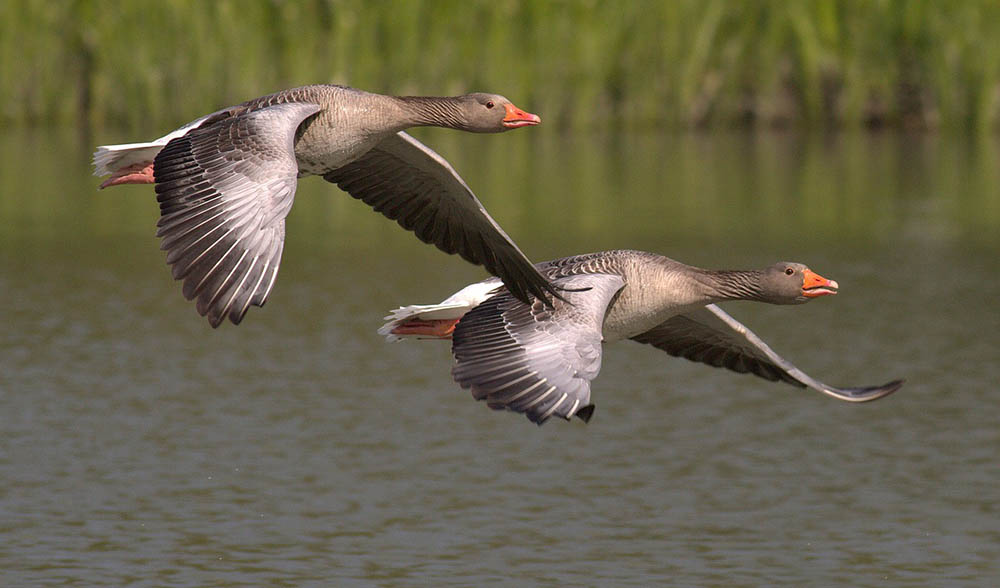
| Season Dates: | September–January, depending on the zone |
| Daily Bag Limit: | 15 in September, 5 in October–November, 1 in December–January |
During the September hunting season for Canada geese, you can take home 15 a day, but in October, you can only kill five per day. After 1950, the population of migratory Canada geese declined sharply, but the non-migratory population slowly increased, and in the last 20 years, more geese have made North Carolina their permanent home. Due to conservation efforts, the non-migratory population in the state has risen to over 100,000 geese.
7. Brant

| Season Dates: | December 28–January 31 |
| Daily Bag Limit: | 1 |
Brants are not native to North Carolina but are long-distance travelers that fly over 3,000 miles to reach North Carolina’s coast in the winter for nesting. Unlike the gregarious Canada goose, the brant is a smaller species with a brown body, black head, and distinct white ring around its neck. The hunting season for brant is limited in North Carolina, and you only have 34 days to hunt them.
8. Light Geese

| Season Dates: | October 11–February 11, February 13–March 31 (permit only) |
| Daily Bag Limit: | 25 |
North Carolina’s light geese include Ross’s geese and snow geese. Although the bag limit for the birds is 25 in the first hunting season, hunters with special permits can take home an unlimited number during the conservation order season (February 13–March 31). Regulations during the conservation order season are also less strict; you can use unplugged guns and electronic calls, and the shooting hours are increased to 30 minutes after sunset.
9. Tundra Swan
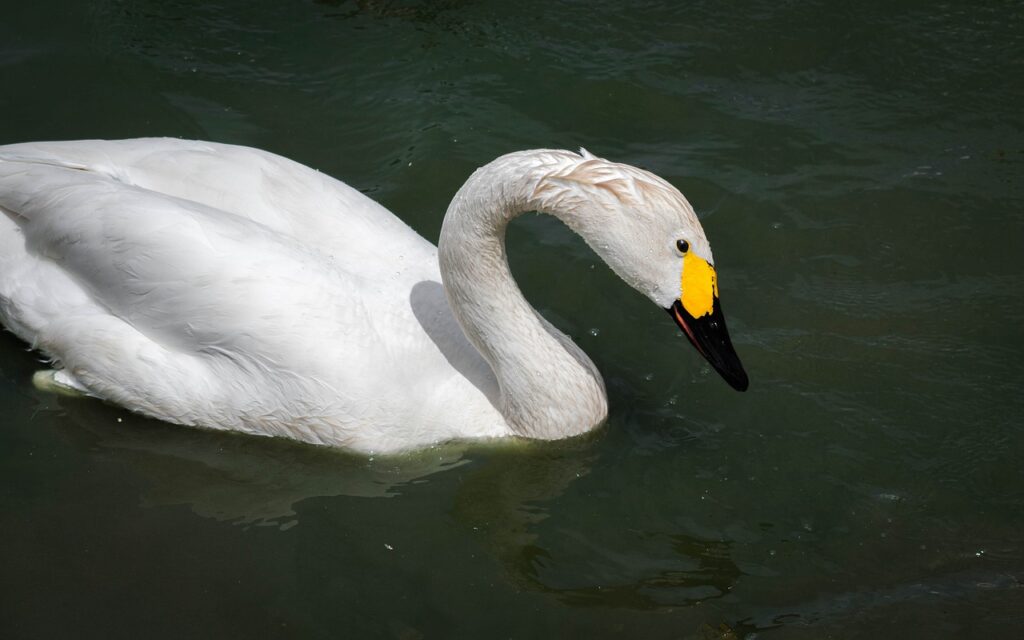
| Season Dates: | November 5–January 31 (by permit only) |
| Daily Bag Limit: | 1 per season with a special permit |
The state only issues 5,000 special permits to hunt the tundra swan. The gorgeous white birds visit North Carolina for the winter more than any state on the east coast, and North Carolina is one of the few states that allows tundra swan hunting. However, permits are only granted through a lottery system, and hunters can only claim one swan per season.
Small Game
10. Beaver

| Season Dates: | No closed season (requires landowner’s permission) |
| Daily Bag Limit: | No limit |
At one time, beaver fur was a prized commodity in North America and Europe, and by the dawn of the 20th century, nearly every native beaver had disappeared from the eastern United States. In 1897, the last native beaver was trapped in North Carolina. However, the North Carolina Resources Commission began reintroducing the species to the state in the 1930s. The population is now stable, and trappers are again allowed to trap beavers from November 1 to March 31.
11. Bobcat

| Season Dates: | October 17–February 28 |
| Daily Bag Limit: | No limit |
Early settlers called the elusive felines “woods ghosts” because the bobcats were rarely seen unless spotted lurking in the forest at dusk. Since they were considered a threat to livestock and game animals, bobcats were nearly hunted to extinction. In the 1970s, the United States Endangered Species Act provided protection for the cats, and the population slowly increased. Although bobcats can kill sheep and other small farm animals, they rarely encounter people. They prefer to stay away from humans and are unlikely to attack them.
12. Armadillo

| Season Dates: | No closed season |
| Daily Bag Limit: | No limit on private land |
In 1849, the first armadillo was introduced to Texas. The nine-banded armadillo, native to Central and South America, is the only armadillo species in the southeastern United States. Since its introduction to the U.S., the armadillo has expanded its range significantly and began establishing habitats in North Carolina after 2000. Although the species can carry leprosy, a recent study showed that 0% to 10% of southeastern armadillos tested positive for the disease.
13. Crow
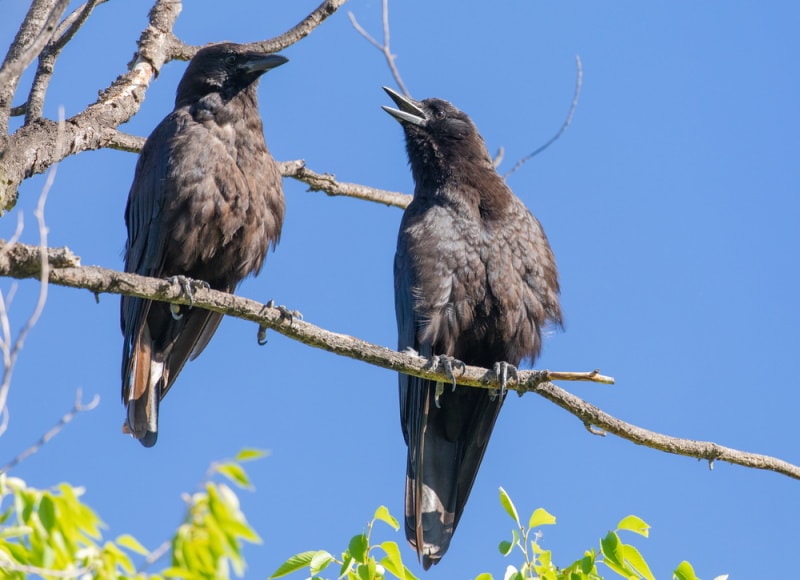
| Season Dates: | August 3–February 25, June 7–July 29 |
| Daily Bag Limit: | No limit |
Crows may not seem like a common target for hunters, but the early weeks of crow season are ideal for hunters who want to practice their skills for waterfowl season. Crows are a federally protected species, which means you cannot kill them at just any time of the year, but crow season is much longer than most seasons in North Carolina. Crow hunting is similar to duck hunting; hunters use camouflage and blinds to hide and employ calls to attract the birds. In addition to the season dates listed, you can hunt crows on Christmas, Thanksgiving, Labor Day, New Year’s Day, Martin Luther King Jr. Day, and July 4.
14. Coyote
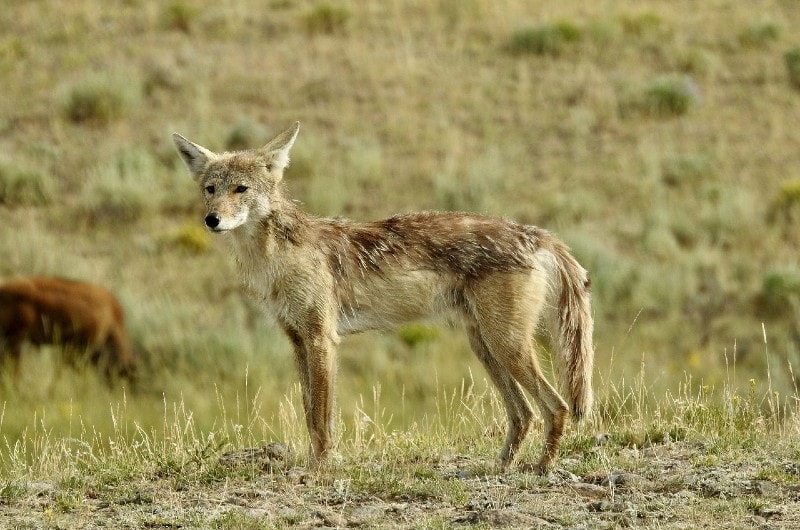
| Season Dates: | No closed season, but five counties have restrictions |
| Daily Bag Limit: | No limit |
Unlike other species, coyotes have fewer restrictions regarding the hunting season and bag limit. They can be hunted at any time of the year, and there is no bag limit. However, five counties in North Carolina prohibit night hunting with artificial limits and require a permit for coyote hunting. They include Hyde, Dare, Washington, Tyrrell, and Beaufort. In the state’s remaining 95 counties, you can hunt coyotes at night without a permit.
15. Fox
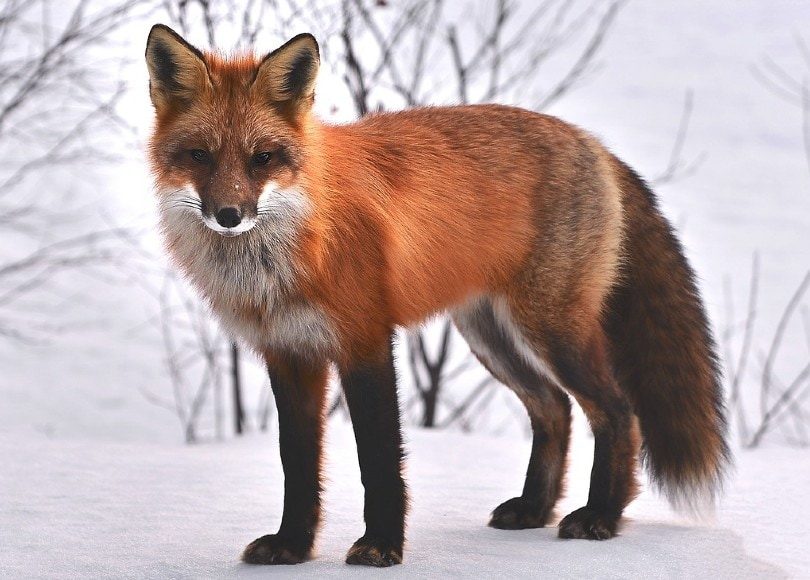
| Season Dates: | Year-round hunting allowed, including Sundays, but some counties restrict fox hunting |
| Daily Bag Limit: | No limits but must be taken with dogs; without dogs, the daily limit is 2 |
North Carolina hunters can hunt the red and gray fox throughout the year, and unlike most hunting seasons, you can hunt them on Sunday. However, hunters can only hunt foxes with dogs, and some counties restrict hunts with dogs. The red fox is less common in North Carolina than the gray fox, but both animals typically establish habitats in grassy fields and near large tracts of farmland. Foxes are omnivorous but primarily rely on small animals, eggs, and birds for sustenance.
16. Feral Swine

| Season Dates: | No closed season on private lands |
| Daily Bag Limit: | No bag limit, but restrictions apply for trapping feral swine |
The restrictions for hunting feral hogs are nearly identical to coyote hunting. You can use electronic calls to attract the swine, and they can be hunted at night with artificial lights. Wild boar are considered an invasive species in North Carolina, and although they have a strong presence in the mountainous regions in the west, they’ve been reported in every county in the state. According to the N.C. Wildlife Resources Commission, wild boar cause approximately $1.5 billion in crop damage every year. However, the hungry swine will devour practically any plant, and they have destroyed lawns and gardens in suburban areas.
17. Quail

| Season Dates: | November 19–February 28 |
| Daily Bag Limit: | 6 |
Along with rabbits and squirrels, quails are one of North Carolina’s most hunted small game species. Each year, hunters harvest an estimated 230,000 quail. The northern bobwhite quail can be spotted in every county, but the largest population resides in the eastern inland counties and Outer Banks. Although quails are popular for hunting, their population has slowly declined in the last 50 years. However, the N.C. Resources Commission has created the Cooperative Upland Habitat Restoration and Enhancement (CURE) program to restore the habitats of quail and grouse.
18. Groundhog

| Season Dates: | No closed season on private lands |
| Daily Bag Limit: | No limit |
North Carolina rests on the edge of the groundhog’s southern range. Although they were once more common in western counties in the Appalachians, groundhogs have expanded into the piedmont and coastal plains. You can hunt the animals any time of year, and in suburban areas that prohibit hunting with firearms, you may be able to trap them, depending on local regulations.
As the groundhog’s range has expanded east, more homeowners have reported damage to gardens and lawns caused by the large rodent’s burrowing.
19. Grouse

| Season Dates: | October 18–February 28 |
| Daily Bag Limit: | 3 |
Residents in the eastern regions of the state will have to travel west to hunt the ruffed grouse. They live in the western counties and a few areas in the piedmont and prefer mixed and deciduous forests. Grouse have two distinct color patterns (brown and gray) that make them challenging to spot on a hunt. However, most hunters spot them from the “drumming” call that they make; male grouse are more vocal in the early morning hours.
20. Opossum

| Season Dates: | October 18–February 28 |
| Daily Bag Limit: | No limit |
Virginia opossums have lived in North Carolina since the Pleistocene period, and they’re the state and country’s only native marsupial. They prefer forested areas near streams, but the creatures have adapted to diverse habitats around the state, including suburban areas, cities, and farmland. In most counties, the opossum population is stable, and some have seen increases in recent years. Since they’re abundant in the state, there is no bag limit for hunting them.
21. Nutria

| Season Dates: | No closed season on private land |
| Daily Bag Limit: | No limit |
In the late 19th century, the nutria was introduced to the United States to boost the fur trade, but commerce officials at the time did not predict that the South American rodent would proliferate across the eastern states and damage farmlands and wetlands. Nutrias now have habitats in 22 states. Nutrias resemble beavers but are slightly smaller and have long tails, unlike the beaver’s paddle tails. In Louisiana, nutrias have destroyed crops and the aquatic vegetation in wetlands.
North Carolina faces the same threat because the invasive creatures primarily live in the eastern counties near the coast. However, the animal’s range has expanded west to other inland counties in the coastal plains.
22. Raccoon

| Season Dates: | October 18–February 28 |
| Daily Bag Limit: | 3 |
Raccoons share the same hunting season as opossums, but the daily bag restriction is limited to three. However, there is no season limit for hunting raccoons in North Carolina. When training dogs to hunt raccoons, carrying climbing irons or firearms is illegal. Also, you cannot have saws or axes while hunting the clever mammals. Raccoons are abundant in every county in the state, and they prefer habitats with reliable food supplies, which include suburban trash cans and gardens.
23. Pheasant (Male only)
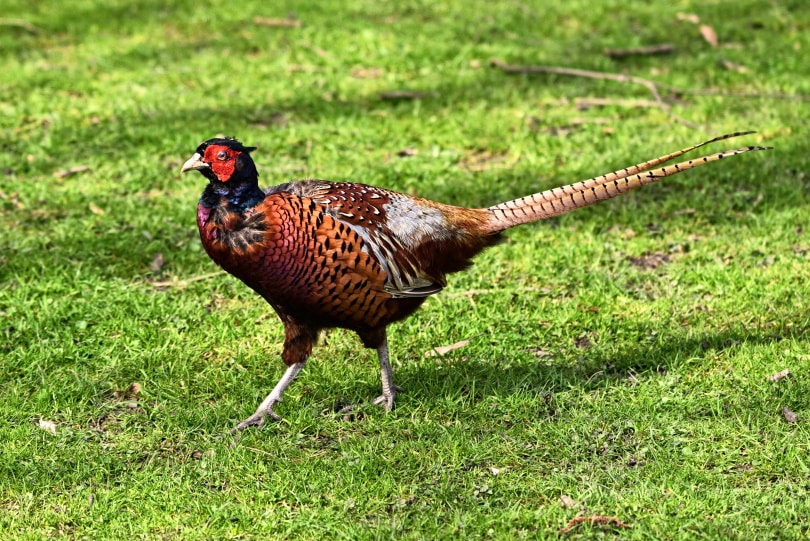
| Season Dates: | November 20–February 1 |
| Daily Bag Limit: | 3 |
Until around 1990, the pheasant was a common species in North Carolina. However, the birds have specific habitat conditions (coastal grasslands and bushy thickets) that few counties could sustain, and when gray and red foxes expanded their range to the coastal islands, they preyed on the pheasants and eliminated most of the island birds.
Pheasants previously inhabited several islands in the Outer Banks, but currently, they only reside in Core Banks and Portsmouth Island. However, a few birds have been reported near Ocracoke Island, once home to a thriving population, but most of the species disappeared from Hatteras and Ocracoke.
24. Squirrel (Red and Gray)

| Season Dates: | October 18–February 28 |
| Daily Bag Limit: | 8 |
The gray squirrel is more common than any game mammal in the state and is also the state mammal of North Carolina. Gray and red squirrels can be hunted in the state, but the gray squirrel has an additional spring season from May 8 to May 22, when hunters can only kill them on private lands. Although the daily limit for both species is eight animals, there is no season limit for hunting red or gray squirrels.
25. Doves (White-Winged and Mourning)

| Season Dates: | September 3–October 1, November 5–November 26, December 10–January 31 |
| Daily Bag Limit: | 15 |
White-winged and mourning doves have a relatively long season in North Carolina, but the mourning dove is more common around the state. In addition to the season dates listed above, dove hunters can also participate in the extended falconry season from October 3 to October 15.
Like the standard season, falconers are prohibited from hunting doves on Sunday and must hunt from ½ hour before sunrise to sunset. However, the daily bag limit for falconers is only three birds.

Summing Up
Hunters have several game species in North Carolina to hunt; except for a few species, like the pheasant, most have stable populations. The white-tailed deer is the state’s most hunted large game animal, but small game hunters also have an ample supply of creatures to target in North Carolina’s public hunting grounds. Although we mentioned a few of the exceptions to the hunting seasons and bag limits, it’s best to check the local regulations in your preferred hunting area for any changes or exemptions.
Featured Image Credit: maxzzerzz ❄, Unsplash
About the Author Christopher Bays
Christopher Bays is a writer and editor from North Carolina who enjoys researching and writing about pets. After caring for a Siamese cat for 19 years, he adopted a Russian Blue mix named Olga. Olga stays by his side while he’s working and is skilled at opening doors and causing mayhem. When he’s not working, Christopher is happiest when he’s working in his garden, writing short stories, hiking, and listening to the Grateful Dead.
Related Articles:
What Is the Best Binocular Magnification for Hunting? Optical Features Explained
Can You Use Binoculars to Look At Stars? How to Choose the Right Pair
How to Sight a Laser on a Pistol (8 Tips & Tricks)
Can You Hunt Coyotes? Methods, Reasons, & Tips
What Can You Hunt in Hawaii? 9 Common Game Species (With Pictures)
Can You Hunt With a Handgun? Pros, Cons, & Types
What Can You Hunt in Montana? 9 Common Game Species
How to Use & Aim With Iron Sights for AR-15
